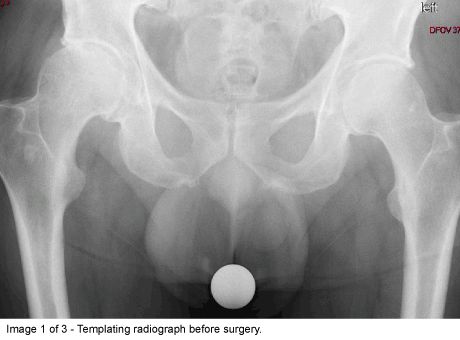- info@patricklusty.co.uk
- 07973 886638
Hip / Hip Replacement
Hip Repalcement
 A general description of hip replacement surgery can be downloaded from this page. There are some differences with joint replacement under the care of Mr Lusty which may help to decrease anxiety regarding surgery.
A general description of hip replacement surgery can be downloaded from this page. There are some differences with joint replacement under the care of Mr Lusty which may help to decrease anxiety regarding surgery.
Leg Length
All patients for hip replacement are offered a templating radiograph where a small metal ball is X rayed with the patient. This allows a computer template to plan which hip implant will restore normal anatomy. This dramatically reduces the risk of leg length inequality, and helps to restore normal hip function.
Surgery
All of my hip replacements are performed through the posterior approach. This avoids cutting muscles important in walking allowing a more rapid recovery and preventing a long term limp. I have been using this technique as a consultant since 2007 on about 100 patients a year.
Clips and drains
Patients do not usually have clips or sutures to remove. Some patients may have a drain which is removed on the morning after surgery.
Pain
This is the biggest concern of many patients having surgery. Modern techniques will allow better pain control and a more rapid recovery. Analgesia is started before surgery. Pain is now not usually a significant feature of hip replacement surgery.
Recovery
Most patients stand on the day of surgery and may take their first steps. The emphasis needs to be on rapid recovery, rather than rapid discharge. Most patients are discharged on the second or third day after surgery. Some patients, through individual circumstances or rate of recovery, do stay longer than 3 days in hospital. This does not have a bearing on their final function.

